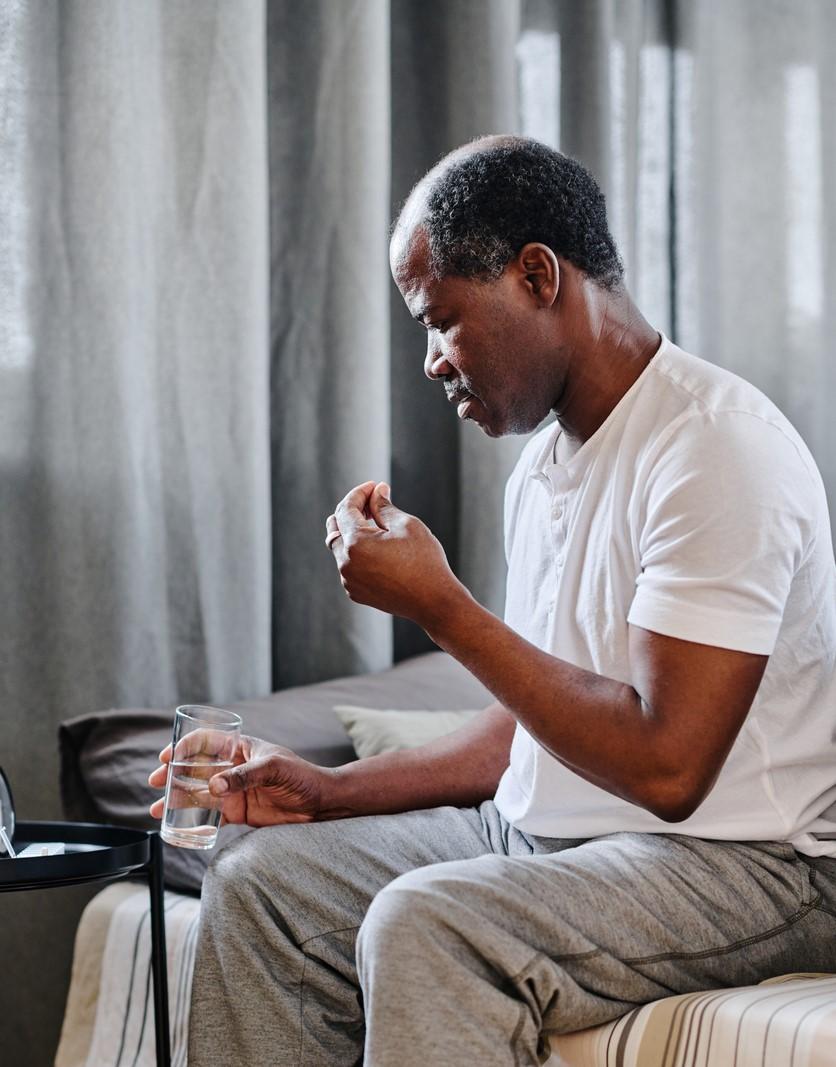A pair of new studies describes the clinical benefits of two oral antiviral drugs in COVID-19 patients amid the Omicron period, one from Israel suggesting that nirmatrelvir-ritonavir (Paxlovid) reduced rates of hospitalization and death in people 65 years or older, and research from Hong Kong demonstrating that Paxlovid and molnupiravir lowered rates of death, disease progression, and the need for supplemental oxygen in older hospitalized patients.
In the United States, the Food and Drug Administration (FDA) granted emergency use authorization for oral Paxlovid and molnupiravir for the treatment of patients with mild or moderate COVID-19 at high risk for severe illness within 5 days of symptom onset, regardless of vaccination status.
Benefits strongest in 65-or-older group
Yesterday in the New England Journal of Medicine, a team led by Clalit Health Services researchers in Tel Aviv published an observational, retrospective study on the outcomes of 109,254 eligible COVID-19 patients aged 40 years or older during the Omicron wave from Jan 9 to Mar 31, 2022. Average age was 60 years, 60% were women, 39% were aged 65 or older, and 78% had previously had COVID-19, were vaccinated, or both.
Of the 109,254 patients, 3,902 (4%) received at least one dose of Paxlovid, including 2,484 of 42,821 patients (6%) 65 years or older and 1,418 of 66,433 patients (2%) 40 to 64 years. About 97% of Paxlovid recipients completed the 5-day treatment.
The COVID-related hospitalization rate among patients aged 65 years or older was 14.7 per 100,000 person-days in Paxlovid recipients (11 of 2,484 patients [0.4%]), compared with 58.9 per 100,000 in those not receiving the drug (766 patients [1.9%]) (adjusted hazard ratio [aHR], 0.27; 95% confidence interval [CI], 0.15 to 0.49). The aHR for COVID-19 death in Paxlovid recipients aged 65 or older was 0.21 (95% CI, 0.05 to 0.82), versus 1.32 (95% CI, 0.16 to 10.75) in non-recipients.
Among patients aged 40 to 64 years, the COVID-19 hospitalization rate was 15.2 cases per 100,000 person-days in Paxlovid recipients (7 patients [0.5%]), compared with 15.8 cases per 100,000 person-days in non-recipients (327 patients [0.5%] (aHR, 0.74; 95% CI, 0.35 to 1.58). In this age-group, 1 of 1,418 Paxlovid-treated patients (0.0007%) died of COVID-19, as did 16 of 65,015 untreated patients (0.0002%) (aHR, 1.32; 95% CI, 0.16 to 10.75).
In both age-groups, the risk factors most strongly tied to COVID-19 hospitalization were a lack of previous SARS-CoV-2 immunity and a previous hospitalization.
"Our study suggests that during the omicron surge, the rates of hospitalization and death due to Covid-19 were significantly lower among adults 65 years of age or older who had received treatment with nirmatrelvir than among younger adults who had received such treatment, regardless of whether a patient had previous SARS-CoV-2 immunity," the study authors wrote, adding that studies on the short- and long-term safety of Paxlovid in real-world settings are needed.
Prioritization of older people, undervaccinated
University of Hong Kong researchers retrospectively studied the real-world effectiveness of 5 days of treatment with molnupiravir or Paxlovid in hospitalized adult COVID-19 patients in Hong Kong who didn't need oxygen therapy at admission during the Omicron BA.2 wave from Feb 26 to Apr 26, 2022. The observation period ended on May 3.
The research, based on analysis of electronic health records, was published yesterday in The Lancet Infectious Diseases.
Antiviral therapy was initiated within 2 days of hospitalization, and the 40,766 patients were followed up on for, on average, 41.3 days. Recipients of either molnupiravir (1,856 patients) or Paxlovid (890) were matched in a 1:1 ratio with control patients.
Seven days after hospital admission, the proportion of patients who died was lower in molnupiravir recipients (2.3%) than in controls (5.3%) and in Paxlovid recipients (1.3%) than in controls (3.6%), a difference that persisted to day 28 (molnupiravir, 7.5% vs controls, 14.9%; Paxlovid, 3.5% vs controls, 9.3%).
At 28 days, the proportion of patients released from the hospital was slightly higher among antiviral recipients than controls (molnupiravir, 84.4% vs controls, 75.3%; Paxlovid, 89.6% vs controls, 82.5%).
Molnupiravir recipients had a lower rate of death from any cause (19.98 per 10,000 person-days) than controls (38.07 per 10,000) (hazard ratio [HR], 0.48). Similarly, death rates in Paxlovid recipients were 10.28 per 10,000 patients, versus 26.47 per 10,000 in controls (HR, 0.34).
Relative to controls, antiviral recipients were also at lower risk of disease progression (molnupiravir HR, 0.60; Paxlovid HR, 0.57) and the need for supplemental oxygen (HRs, 0.69 and 0.73, respectively). The interval between treatment and reaching a low viral load was significantly shorter in the antiviral group than in controls (HR, 1.38 for both drugs), but there were no significant differences in the need for invasive mechanical ventilation or intensive care.
"Results of our subgroup analyses suggested a possible lack of significant benefit in younger patients (aged ≤65 years) and those who had been fully vaccinated, which would support prioritising the prescription of oral antivirals to older people and those not adequately vaccinated, who are also likely to be at increased risk of progression to severe COVID-19," the researchers wrote.
In a related commentary, Dorota Zarebska-Michaluk, PhD, of Jan Kochanowski University, and Robert Flisiak, MD, PhD, of the Medical University of Bialystok, both in Poland, said that the study was not a head-to-head comparison of the two antivirals because of an imbalance of age, vaccination status, and rates of underlying medical conditions. Yet the results "support the early use of oral antiviral drugs in patients with mild-to-moderate COVID-19 who are at high risk, regardless of whether they are in outpatient or inpatient care."




















